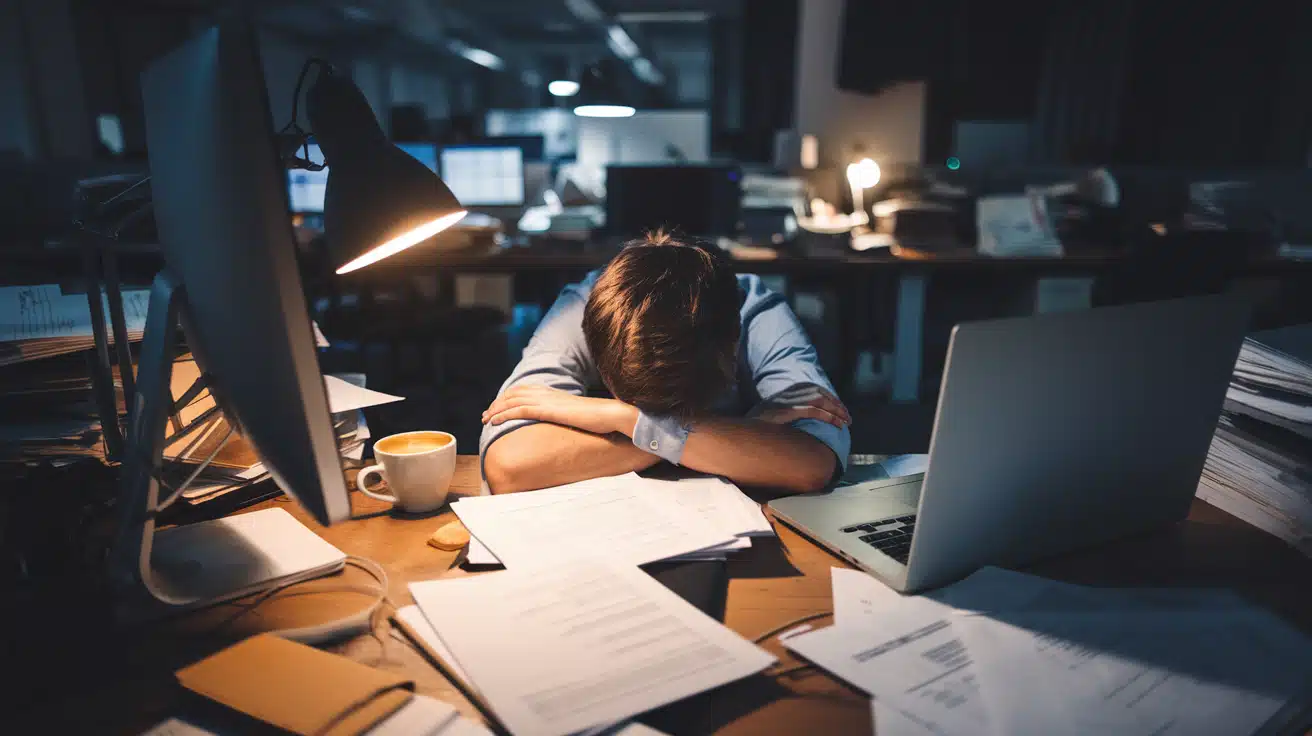Have you ever felt like you’re running on empty, pushing through each day on autopilot?
Millions of people experience stress and burnout, yet many don’t recognize the warning signs until they’re completely overwhelmed.
The difference between temporary stress and chronic burnout can be life-changing if caught early.
Understanding these signals isn’t just about workplace wellness; it’s about protecting your mental and physical health before reaching a breaking point.
Understanding the Difference: Stress vs Burnout
Stress and burnout aren’t the same thing, though they’re closely connected. Stress is your body’s natural response to challenges and demands.
| Stress | Burnout |
|
Short-term response to specific situations Can feel energizing or motivating Usually improves once the stressor is removed Involves feeling “too much” pressure |
Long-term condition from prolonged stress Feels depleting and exhausting Doesn’t improve with rest alone Involves feeling “not enough” energy or resources |
It can actually motivate you and help you perform better. Burnout, however, is what happens when chronic stress goes unchecked.
The Three Stages of Burnout Explained
Burnout doesn’t happen overnight. Understanding burnout stages explained can help you catch it early:
Stage 1: Honeymoon Phase
You’re eager, energetic, and willing to work long hours. You might sacrifice personal time but feel productive and accomplished.
↓
Stage 2: Onset of Stress
You begin to notice that some days are harder than others. Irritability begins to creep in, and you start having trouble sleeping or concentrating.
↓
Stage 3: Chronic Stress and Full Burnout
You feel emotionally and physically exhausted. Nothing seems to help, and you may experience anxiety, depression, or physical symptoms.
Early Warning Signs of Stress and Burnout to Watch For
Your body often sounds the alarm before your mind fully recognizes burnout, functioning as a sophisticated early warning system that sends distress signals through multiple channels, physical sensations, unexplained symptoms, and subtle changes in your overall well-being throughout the day.
Physical Symptoms
- Chronic fatigue that doesn’t improve with rest
- Frequent headaches or muscle tension
- Changes in appetite or sleep patterns
- Getting sick more often than usual
- Digestive issues or stomach problems
Emotional Signs
- Feeling overwhelmed or helpless most days
- Loss of motivation or enthusiasm
- Increased irritability or impatience
- Feeling detached from work or relationships
- Sense of dread about upcoming tasks
Behavioral Changes
- Procrastinating more than usual
- Calling in sick more frequently
- Isolating yourself from others
- Using alcohol, food, or other substances to cope
- Decreased productivity despite working longer hours
Mental Symptoms
- Difficulty concentrating or making decisions
- Forgetfulness or mental fog
- Negative self-talk or self-doubt
- Feeling like nothing you do matters
- Racing thoughts or constant worry
Early Signs of Burnout Checklist
Use this simple checklist to assess your current state:
| Symptom Category | Yes/No | Specific Signs |
|---|---|---|
| Energy Levels | □ | Feeling tired even after sleeping |
| Work Performance | □ | Struggling to complete normal tasks |
| Relationships | □ | Avoiding friends or family |
| Physical Health | □ | New aches, pains, or illnesses |
| Emotional State | □ | Feeling cynical or hopeless |
| Sleep Patterns | □ | Trouble falling or staying asleep |
If you checked three or more boxes, consider taking action to address potential burnout.
Stress vs Anxiety Symptoms: Knowing the Difference
Sometimes burnout symptoms overlap with anxiety. Here’s how to tell them apart:
Stress symptoms typically relate to specific situations and improve when stressors are removed.
Anxiety symptoms often persist even without obvious triggers and may include excessive worry about future events.
Both can contribute to burnout, so addressing either is important for your overall well-being.
Red Flags That Require Immediate Attention
Seek help immediately if you experience:
- Thoughts of self-harm or suicide
- Complete inability to function at work or home
- Substance abuse as a coping mechanism
- Severe depression or anxiety attacks
- Physical symptoms that interfere with daily life
Simple Self-Assessment Questions if You Feel Burnout
Ask yourself these questions regularly:
- Do I feel energized by my work, or do I feel drained by it?
- Am I sleeping well and waking up refreshed?
- Do I have energy for activities I used to enjoy?
- Am I connecting meaningfully with others?
- Do I feel hopeful about the future?
Your honest answers can reveal early warning signs before they become overwhelming.
When Professional Help Makes SenseConsider reaching out to a mental health professional if:
|
Conclusion
Recognizing early signs of stress and burnout is the first step toward protecting your well-being.
Remember, burnout is preventable and treatable. You don’t have to wait until you’re completely exhausted to make changes.
Making small adjustments to your daily routine, setting clear boundaries, and seeking support can make a significant difference.
Trust your instincts; if something feels off, it probably is. Your mental health deserves the same attention you’d give to any physical injury.
Share your thoughts or questions in the comments below. Your experience might help someone else recognize their own warning signs.







































